- COP Climate Change
- Coronavirus (COVID-19)
- Cancer Research
- Diseases & Conditions
- Mental Health
- Women’s Health
- Circular Economy
- Sustainable Development
- Agriculture
- Research & Innovation
- Digital Transformation
- Publications
- Academic Articles
- Health & Social Care
- Environment
- HR & Training
- Health Research
- North America Analysis
- Asia Analysis
- Our Audience
- Marketing Information Pack
- Prestige Contributors
- Testimonials

- North America
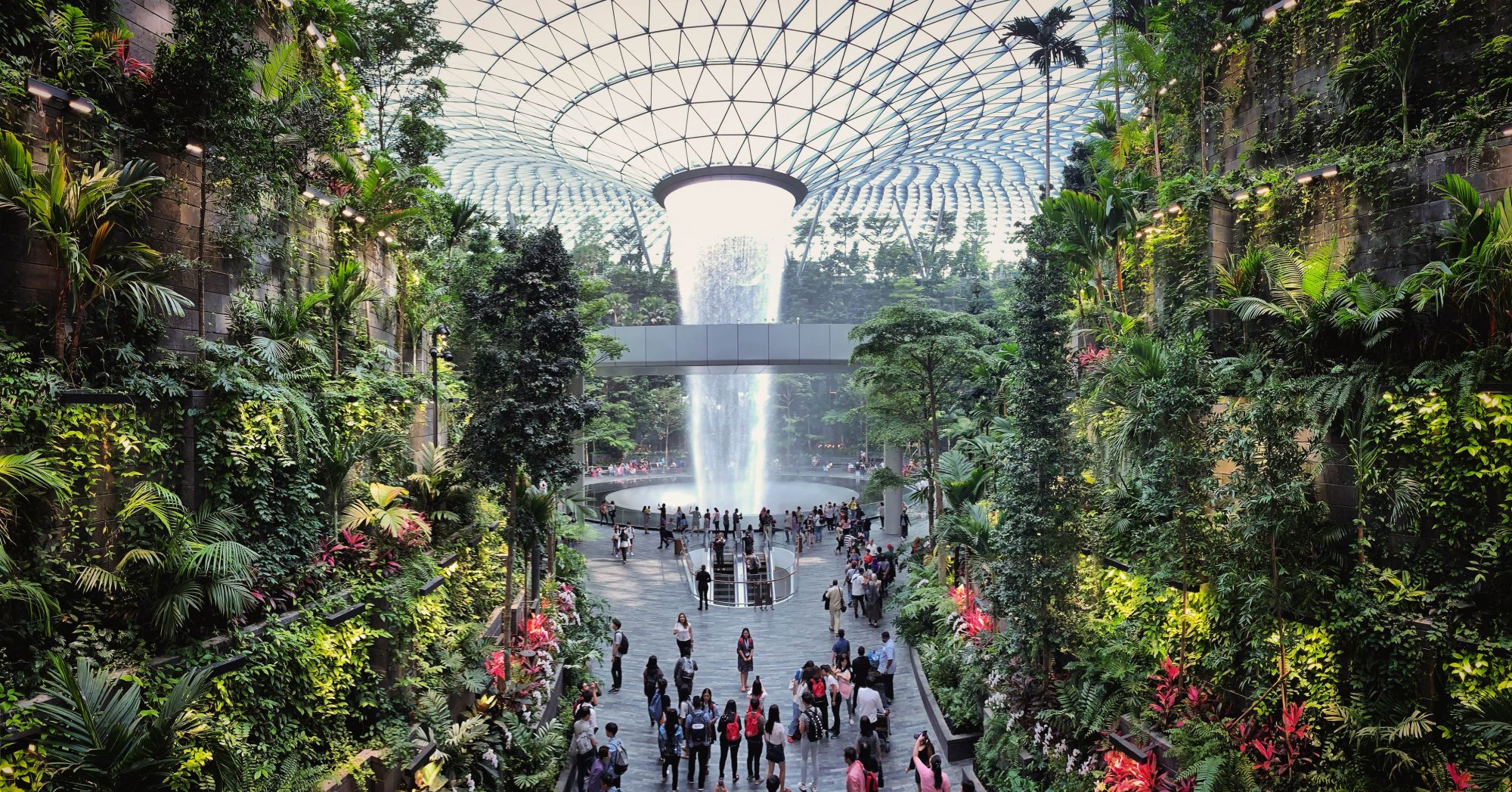
- Open Access News
- Sustainable Development News

Transforming Singapore towards sustainable tourism and urban living
Sustainable tourism is becoming a bigger concept in singapore, where they are prepared to address traveller needs and reconsider their carbon output.
The travel and tourism sector is one of the largest employers in the world with the number of workers in the sector reported to have reached 289 million (1). In 2021, travel and tourism accounted for 6.1% of the global domestic product (GDP), and amounted to approximately 5.8 trillion U.S. dollars, not quite pre-pandemic levels but experiencing a year-on-year rise (2). As a key contributor to the global economy, the travel sector must work towards more sustainable tourism in the future, if we are to meet the goals set by the 2015 Paris Agreement and the recent targets outlined at COP27.
The opportunity for sustainable tourism and travel
The issues of climate change are well documented and if they do not encourage action, perhaps an economic case could. More businesses are incorporating sustainability in product development to make it meaningful for their bottom lines in the long run. According to management consultancy Bain & Company, there is a clear business case for adopting more sustainable models as doing so can spur growth, reduce costs, and build resilience (3). Sustainability is also a growing concern for consumers who are increasingly choosing more environmentally friendly options. The tourism and travel sector is no exception, with 71% of global travellers wanting to travel more sustainably in the future (4). A new traveller profile, the Mindful Explorer, seeks to contribute to regenerative and sustainable tourism. (5)
As sustainability increasingly becomes a priority for travellers, destinations should be prepared to address their needs.
Singapore’s unique setting as a city-state
Singapore is a small, low-lying island city-state of 734.3 square kilometres (283.5 square miles) in Southeast Asia (6). It is uniquely vulnerable to the effects of climate change as an alternative energy-disadvantaged country with a lack of natural resources, hinterland, and climatic conditions needed for large-scale deployment of renewable energy sources.
These inherent constraints make it challenging to address climate change. But the country does not shy away from taking bold actions where possible.
In 2021, the Singapore Green Plan 2030 (or the Green Plan) was launched as a roadmap to advance Singapore’s national agenda on sustainable development. The Green Plan charts ambitious and concrete targets under five key pillars – City in Nature, Sustainable Living, Energy Reset, Green Economy, and Resilient Future.
Today, Singapore is one of the world’s densest but greenest cities, with green cover at over 40%. The OneMillionTrees movement aims to plant a million more trees across Singapore over the next 10 years with the help of the community. The country is on track to achieve its goal for every household to be within a 10-minute walk from a park by 2030. These are just some of the many initiatives under the Green Plan.
It is important that the industry acknowledges travel and tourism’s carbon footprint which comes predominantly from the aviation industry. With aviation being the predominant travel mode to and from Singapore and sustainable aviation fuel identified as one of the key elements to achieving the aviation industry’s emissions reduction goals (7), in 2022, Singapore announced that it will have the world’s largest sustainable aviation fuel plant by 2023. Singapore Airlines has also operated its first flight with blended sustainable aviation fuel as part of a pilot to advance the use of sustainable aviation fuel in Singapore. (8)
This year, the Civil Aviation Authority of Singapore (CAAS) will publish the Sustainable Air Hub Blueprint which will provide a decarbonisation roadmap for Singapore’s air hub, with medium-term 2030 and longer-term 2050 targets and tangible pathways to achieve them.
A city in nature, where large experiences come with small footprints
Singapore’s vision is to become one of the world’s most sustainable urban destinations – a city in nature where large experiences come with small footprints. The Singapore Tourism Board is working closely with tourism stakeholders to execute the destination sustainability strategy and roadmap for the tourism sector in line with the Green Plan.
First, galvanising sustainable tourism hardware and software. For instance, HyperDrive is a new first-of-its-kind gamified electric go-kart circuit which immerses drivers in a world of real-life racing and virtual gaming, providing an eco-friendly fun time for speedsters. The HyperDrive is thought to be a first-of-its-kind concept in Southeast Asia when it opens in the first half of 2023.
Second, working with sustainable tourism associations to create roadmaps and industry-specific standards for clear directions towards driving greater sustainability. For example, we launched the Hotel and MICE (Meetings, Incentives, Conference and Exhibitions) Sustainability Roadmaps in collaboration with industry associations in 2022 (9). These roadmaps are accompanied with clear targets. For example, 60% of hotel room stock in Singapore are to attain internationally recognised hotel sustainability certification (e.g., by the Global Sustainable Tourism Council) by 2025, as well as commence tracking of emissions by 2023 and reduce emissions by 2030, with a view to achieve net-zero emissions by 2050 .
To support tourism businesses at all stages of their sustainability journey, Singapore launched the Tourism Sustainability Programme (TSP). For example, tourism businesses can tap on TSP to upskill and train employees to take up sustainability-related skillsets or adopt solutions to make their businesses more sustainable in the longer term.
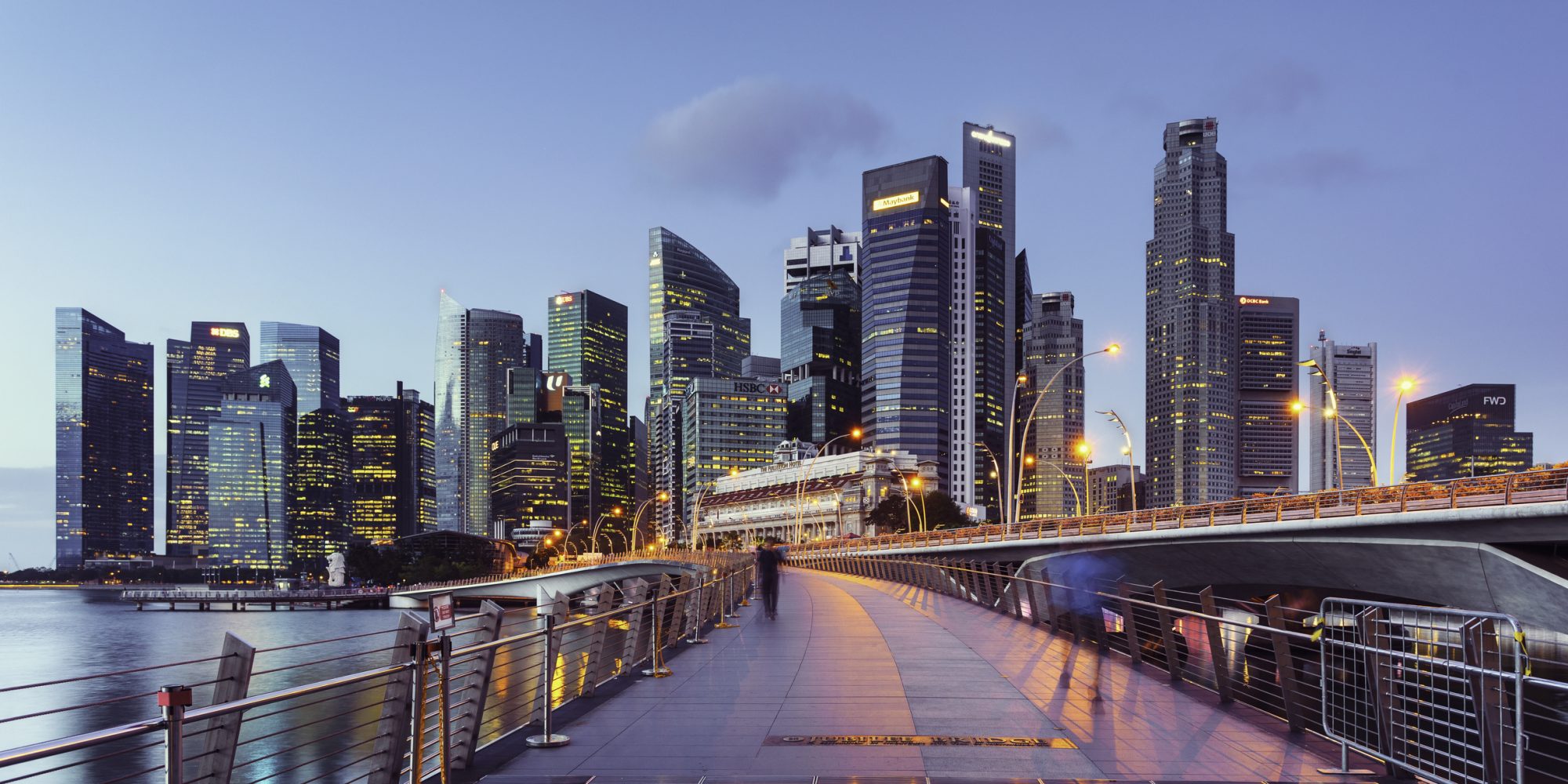
It is also important to invest in the local citizen when attracting the global citizen. Intrepid travellers are in search of authentic local experiences, and locally-sourced food and drink, for example, are more likely to have a lower carbon footprint. Singapore continues to invest in local entrepreneurs and farmers (10), providing safe and secure working environments as well as training for those in the tourism industry to encourage the local community to flourish, as well as investing and maintaining cultural heritage, national monuments, and historical districts to enhance the visitors’ experience.
These efforts are adding to Singapore’s attractiveness globally as a sustainable, responsible travel destination.
How can Singapore pursue sustainable tourism credibly?
Sustainable tourism and development will also not look the same for every destination or organisation. How will the country know if it is on the right track?
STB embarked on an endeavour for Singapore to be certified based on the Global Sustainable Tourism Council (GSTC)’s Destination Criteria. The GSTC Criteria are global standards for sustainable travel and tourism and the GSTC’s Destination Criteria assess a destination’s sustainability performance in thirty-eight criteria across four aspects: (a) Sustainable Management; (b) Socio-economic Sustainability; (c) Cultural Sustainability; and (d) Environmental Sustainability.
In January this year, Singapore was certified as a sustainable destination based on the GSTC’s Destination Criteria, after being the first to apply the certification on a country level.
Singapore is committed to achieving international standards and inspiring more tourism businesses and destinations to contribute to a greener world. The certification reflects Singapore’s commitment to becoming a sustainable urban destination and affirms that its efforts are on the right track.
Being certified is just the beginning of Singapore’s journey. The certification process identified areas where we have done well and where we can do better. Annual audits will be conducted by a GSTC-accredited certification body to ensure that Singapore continues to meet the criteria, including making improvements in the identified areas. STB will continue to work with tourism stakeholders to do more to internalise sustainability as part of their offerings so that they can contribute to making Singapore greener and more livable.
Global collaboration opportunities in travel
To mitigate climate change, focusing on one area or one country is insufficient – global collaboration within the tourism and travel industry is essential. A single solution will not move us forward to achieve our climate goals and build sustainable destinations.
Countries must work together to advance global action towards achieving net zero. Collaborations could include joint contributions to international regulations, standards and certification on emerging technologies such as lower carbon solutions and participation in joint R&D and test beds.
Singapore is already working closely with Australia, Chile, New Zealand and the U.S. to collaborate on low-carbon technologies, such as low-carbon hydrogen and Carbon Capture Utilisation and Storage (CCUS) (11). In a world first, Singapore has commenced negotiations on a bilateral Green Economy Agreement (GEA) with Australia which combines trade, economic and environmental objectives. The country is also working actively to tap low-carbon energy beyond our shores with a view to eventually importing electricity from Malaysia and Indonesia through regional trade arrangements (12).
Singapore companies with relevant expertise have also partnered with overseas businesses to support them in achieving their sustainability aspirations. For example, Singapore developers and consultants have ensured that more than 300 projects from 16 countries had been certified under the Building and Construction Authority (BCA)’s Green Mark scheme (13).
As recently announced, Singapore is also collaborating with the GSTC, the Singapore Association of Convention & Exhibition Organisers & Suppliers (SACEOS) and the Association of Singapore Attractions (ASA), to actively contribute to the development of GSTC’s global sustainability standards for the MICE and Attractions industries respectively. These new industry criteria are expected to be launched progressively from next year.
Such efforts will ensure that our tourism sector continues to maximise social and economic benefits for locals, reduce its impact on our environment, and contribute to conserving our local heritage while doing our part as responsible global citizens, and furthering the international dialogue on sustainable tourism.
Businesses, communities, and governments must collaborate to deliver sustainable and safe destinations for travellers to continue to visit and enjoy – it is good for the economy and the environment.
This piece was written by Carrie Kwik, Executive Director, Europe, Singapore Tourism Board
- World Travel & Tourism Council ( WTTC) – Staff Shortages 2022
- World Travel and Tourism Council/ Statista 2023
- Bain & Company, The Circularity Challenge, May 2022
- Source: Booking.com, Sustainable Travel Report 2022
- WGSN report. Global trend forecaster WGSN is the data partner for SingapoReimagine Global Conversations Reimagine Experiences. WGSN’s report unveiled three new traveller profiles that have emerged from the pandemic as well as their heightened needs.
- Source: Singapore Department of Statistics. Land data as of December 2022.
- https://wttc.org/Portals/0/Documents/Reports/2021/WTTC_Net_Zero_Roadmap.pdf
- By the International Air Transport Association (IATA)
- www.edb.gov.sg/en/business-insights/insights/singapore-to-have-world-s-largest-sustainable-aviation-fuel-plant.html
- www.caas.gov.sg/who-we-are/newsroom/Detail/singapore-airlines-operates-its-first-flights-with-blended-sustainable-aviation-fuel-in-singapore
- Singapore Hotel Association (SHA) and the Singapore Association of Convention & Exhibition Organisers & Suppliers (SACEOS)
- E.g., the Made with Passion national initiative spotlights local products by local entrepreneurs
- E.g., the SG Fresh Produce badges enables consumers to identify local produce by farmers
- www.nccs.gov.sg/media/press-release/singapore-looks-to-develop-and-deploy-lc-technological-solution
- www.nccs.gov.sg/singapores-climate-action/singapore-and-international-efforts/
- www.bcai.com.sg/green.htm
Editor's Recommended Articles

RELATED ARTICLES MORE FROM AUTHOR

UK Government invests £1.73 million in AI projects to drive green transition

Research holds hope for sustainable acetylene production

The need for green and sustainable healthcare amid climate challenges

Revolutionising NHS transport infrastructure towards net zero
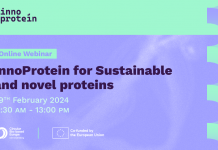
The urgent need for alternative proteins: InnoProtein brings solutions to the table

A Call for Action to leave no one behind in the sustainability transition
Leave a reply cancel reply.
Save my name, email, and website in this browser for the next time I comment.
Related Academic Articles

Bacterial photobiohybrids and photosynthesis: Optimizing energy harvesting with bacterial-semiconductor hybrids

Innovative climate research for guiding policy-making

Pavitra Ganga successfully demonstrates robust and low-energy wastewater technologies in India
Follow open access government, latest news.

Expert report urges urgent action to prioritise NHS workforce well-being

The basics of myopia: What you need to know

Dogs trained to smell out PTSD flashbacks
UK Government invests £1.73 million in AI projects to drive green...

Understanding PCOS symptoms, causes and treatment options

Feature Articles

Leveraging digital innovations in healthcare for organisational success

A call to boldly support the hydrogen sector

Transforming local governance: Granicus’ journey as architects of digital evolution

Mitigating the risk of council technology investments
Latest publication.

Open Access Government January 2024
Latest ebook.

Online intervention for people with dementia and caregivers
- Terms & Conditions
- Privacy Policy
- GDPR Privacy Policy
- Marketing Info Pack
- Fee Schedule

How Singapore became a beacon for sustainable tourism
Beverly Au Yong, area director for the Middle East at Singapore Tourism Board, explains how the city-state has become a benchmark for sustainable practices
The pandemic has shed light on the particular needs of the next generation of travellers in a Covid-19 environment. Among the many criteria that travellers are now seeking, sustainability is a top priority.
Keeping this in mind, the Singapore Tourism Board (STB) has developed a destination sustainability strategy and roadmap for the tourism sector in line with the Singapore Green Plan 2030, with a focus on environmental sustainability and sustainable management.
“As a responsible destination, Singapore is constantly incorporating our sustainability vision into our tourism offerings to achieve our vision of becoming a City in Nature,” said Beverly Au Yong, area director for the Middle East at STB.
The remarks were made by Au Yong along the sidelines of the SingapoReimagine Global Conversations that was held at the Terra Auditorium at Expo 2020 Dubai. The panel included luminaries such as Dr Barkathunnisha, co-founder of World Women Tourism and founder of Elevated Consultancy and training; Michael Magill, managing director of RSP Architects Planners and Engineers Middle East; Xavier Anglada, managing director of Energy GCAL, member of Accenture’s Global Leadership Council, and innovation lead in the Middle East.
Several examples of Singapore’s approach to sustainable tourism were highlighted over the course of the event. For example, the Singapore Hotel Association has set up a Hotels Sustainability Committee to drive industry-wide adoption of sustainability practices. Singapore hotels like JW Marriott South Beach and Parkroyal Collection Pickering have included sustainability considerations in the design and subsequent construction of the hotel infrastructure, whereas hotel partners like Grand Hyatt Singapore, Fairmont Singapore, and Swissotel the Stamford have minimised the environmental footprint of their hotel operations by ensuring efficient use of water, and reduction of waste and carbon emissions. Similarly, hotel partners like One Farrer Hotel and Parkroyal Collection Marina Bay are also incorporating elements of sustainability into hotel experiences by way of initiatives such as introducing farm-to-table dining experiences for guests and preserving the rich heritage of green foliage and existing greenery on site respectively. Furthermore, Singapore’s resort island, Sentosa aims to become a globally recognised, certified sustainable tourism destination and transform itself into a carbon-neutral destination by 2030.
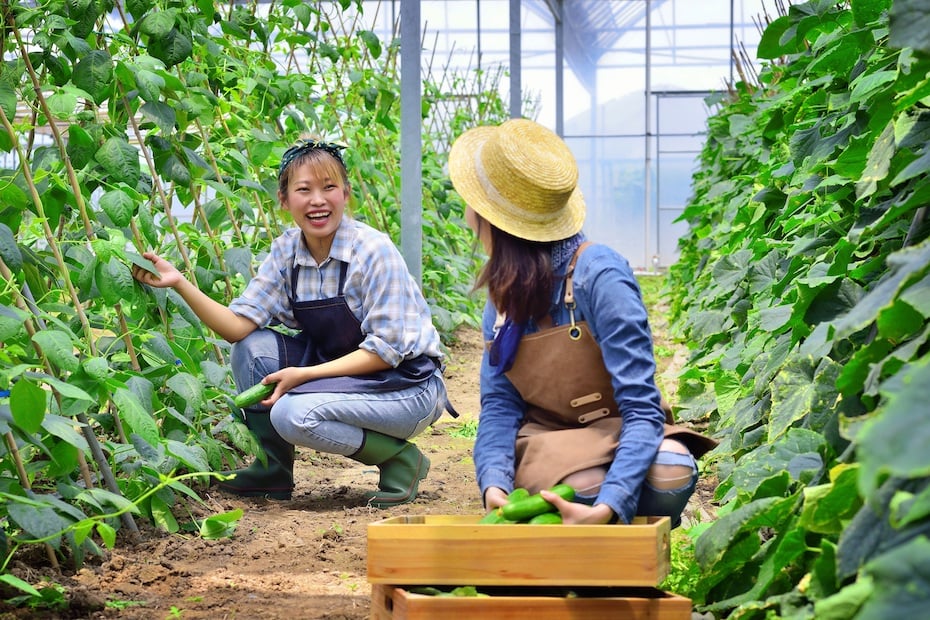
“We are aware that the sustainability journey will be a two-way conversation between the Government and industry, and platforms like the Singapore Reimagine Global Conversations (SRI GC) series offers a stage for industry game-changers to discuss these emerging trends and issues, and to spark ideas to collectively shape the future of tourism,” added Au Yong.
There are several challenges that must be tackled along the way while paving the way for a shift towards sustainable tourism. Shifting business practices to be more environmentally friendly and sustainable can be expensive. Therefore, managing costs effectively during the transition will be key. Many small- and medium-sized enterprises and smaller attractions may not have the immediate financial appetite, even if it does pay off in the long term. But Au Yong counters that by saying, “Sustainability is the right thing for any business to do, but it also begins with a shift in mindset. Sustainability initiatives could mean more efficient processes, use of resources and lower costs in the long run. Businesses need to think about how sustainability makes business sense for them, and fits into their own business processes and models. For example, investments in sustainability solutions, such as food waste management or sustainable building management systems, will also benefit their bottom line in the long run through better resource management.

“Reducing the environmental impact of tourism is a continuous process. Our local tourism businesses and industry partners have already begun incorporating sustainable practices into their products and experiences, and we must forge ahead with supporting them in becoming more environmentally sustainable.”
The Singapore Pavilion at Expo 2020 Dubai aimed to achieve net-zero energy during the six-month event period via the use of solar panels, management of energy and desalination of saline groundwater. Titled “Nature. Nurture. Future.”, it presents a microcosm of Singapore’s transformed landscape to visitors and reflects the nation’s vision of becoming a City in Nature. The pavilion features a multi-layered, three-dimensional green space that showcases Singapore’s strengths and expertise, and highlight the country’s approach to liveability, sustainability and resilience through innovative urban solutions. “Expo 2020 is a global platform that has provided Singapore an opportunity to showcase its innovative urban solutions and culture. The visitors to the Singapore pavilion are offered many unique and immersive experiences into the countries vibrant and dynamic culture and its effort towards becoming a City in Nature. We are confident that the visitors to the Singapore pavilion come out feeling mesmerised having witnessed an amalgamation of design, technology and culture,” concluded Au Yong.
You might also like
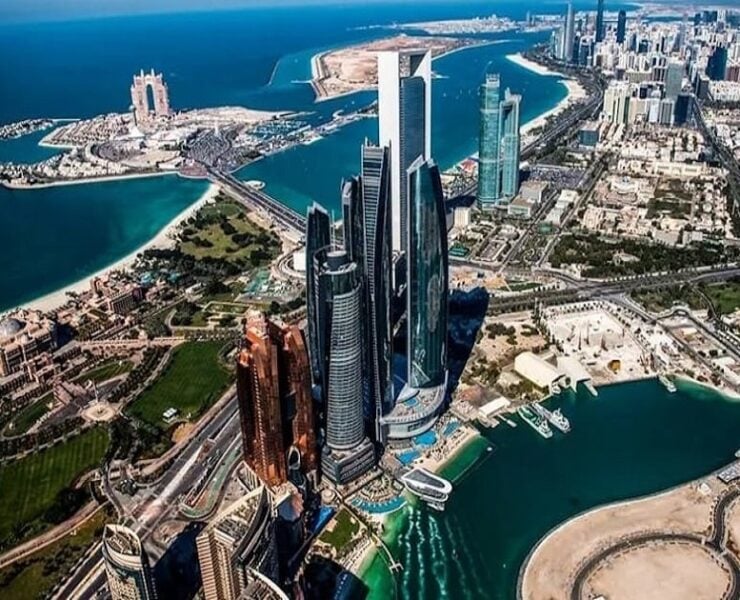
Abu Dhabi extends 10% tax waiver to boost events tourism

EFG Hermes reveals five must watch sectors for 2024

Singapore streaming outfit BIGO targets $500m investment in Saudi Arabia
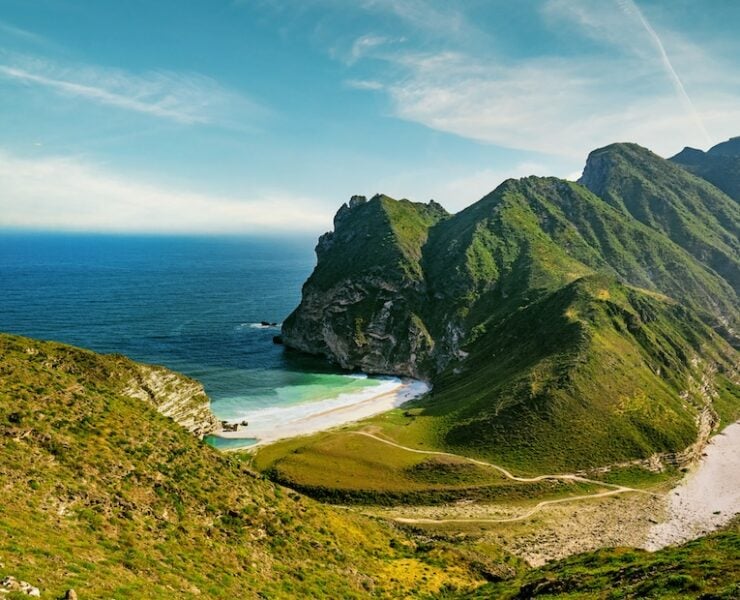
Oman to invest $31bn in tourism sector by 2040
Uae to announce fuel prices for april 2024: will petrol, diesel rates increase, this is how uae fuel prices have fared in the last 14 months, all you need to know about the dubai world cup: races, stakes, and dress code, latest issue.
- Saudi Arabia
- Real Estate
- Special Report
- Art & Culture
Advertise With Us
Privacy policy.
© 2021 MOTIVATE MEDIA GROUP. ALL RIGHTS RESERVED.
- Deutschland
- Traveller Essentials
- About Singapore
- Explore Singapore, Sustainably
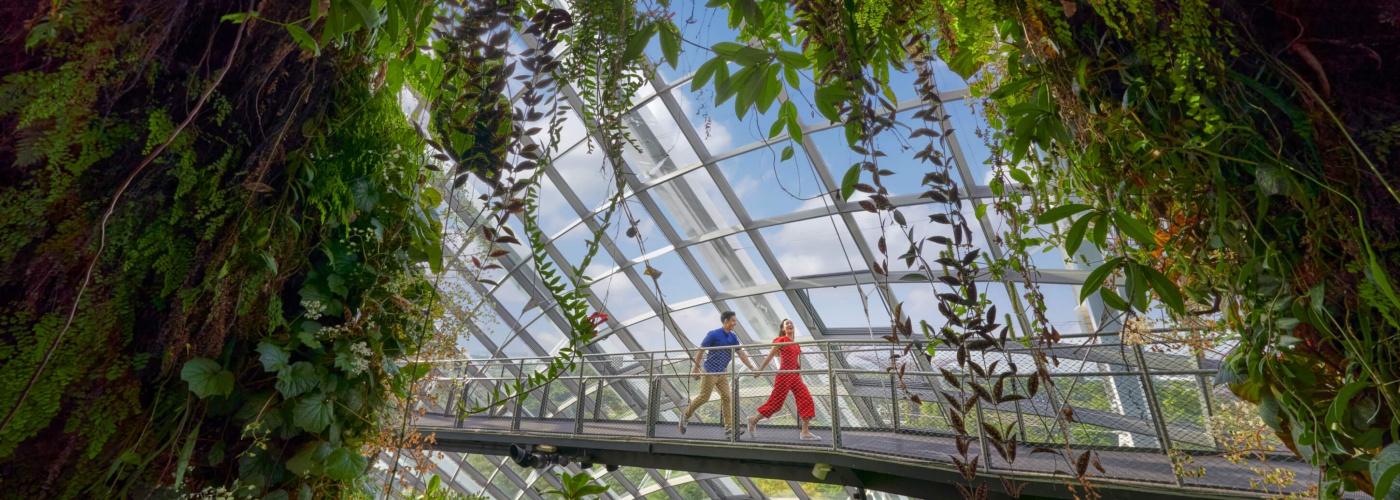
Singapore—Our City in Nature
Discover Singapore, our City in Nature, where large experiences come with small footprints.
Known for being clean and green, Singapore strives to be a sustainable urban destination. Through collective action and the Singapore Green Plan 2030 , our city is reducing its impact on the environment with a limitless realm of possibilities for travellers from all walks of life.
About 95 percent of our city’s energy is powered by natural gas, and over half our island is covered in lush trees and green foliage.
Whether you’re a champion of sustainability visiting Singapore or keen to learn more about conserving nature, here’re some of the many ways to get larger-than-life experiences while doing your part to protect our planet.
Exploring our City in Nature
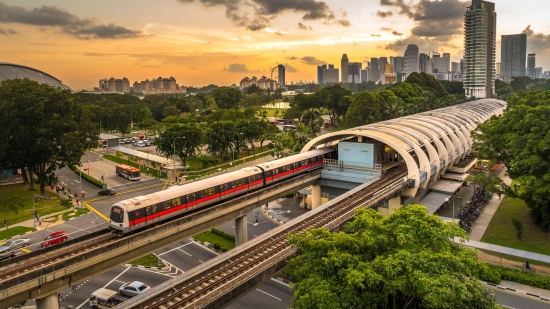
Getting around our island can be easy and eco-friendly, with over 300 bus services and an extensive Mass Rapid Transit (MRT) system linking our many attractions. Whether you’re exploring culture and heritage in Chinatown or checking into a hotel, your destination is never more than a short ride away.
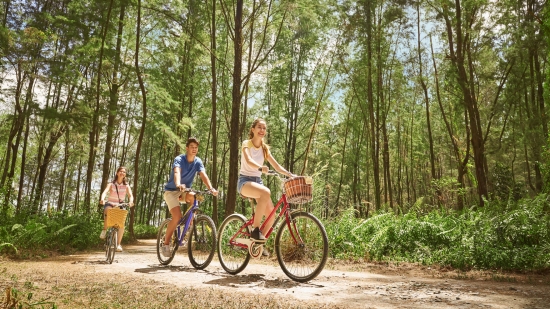
If you're looking to get up-close and personal with our sights and sounds, you can also choose to jog, skate or cycle along our Park Connector Network (PCN) that stretches over 300km long.
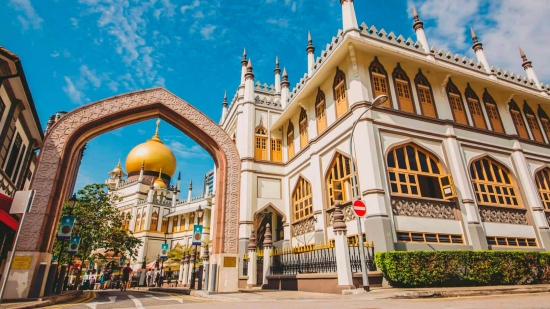
Sustainable tourism is about more than just nature- it's also about conserving and cultivating our multicultural heritage. So why not partake in the best we have to offer? Savour Peranakan culture in Joo Chiat . discover the colourful streets and hip hangouts of Kampong Gelam from the back of a trishaw or journey through history on a stroll through Little India .
Tips for Sustainable Travel in Singapore
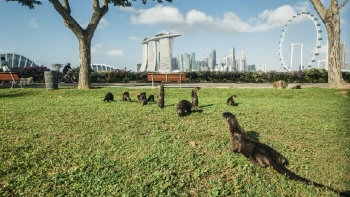
Rachel Teng
- 17 Feb 2022
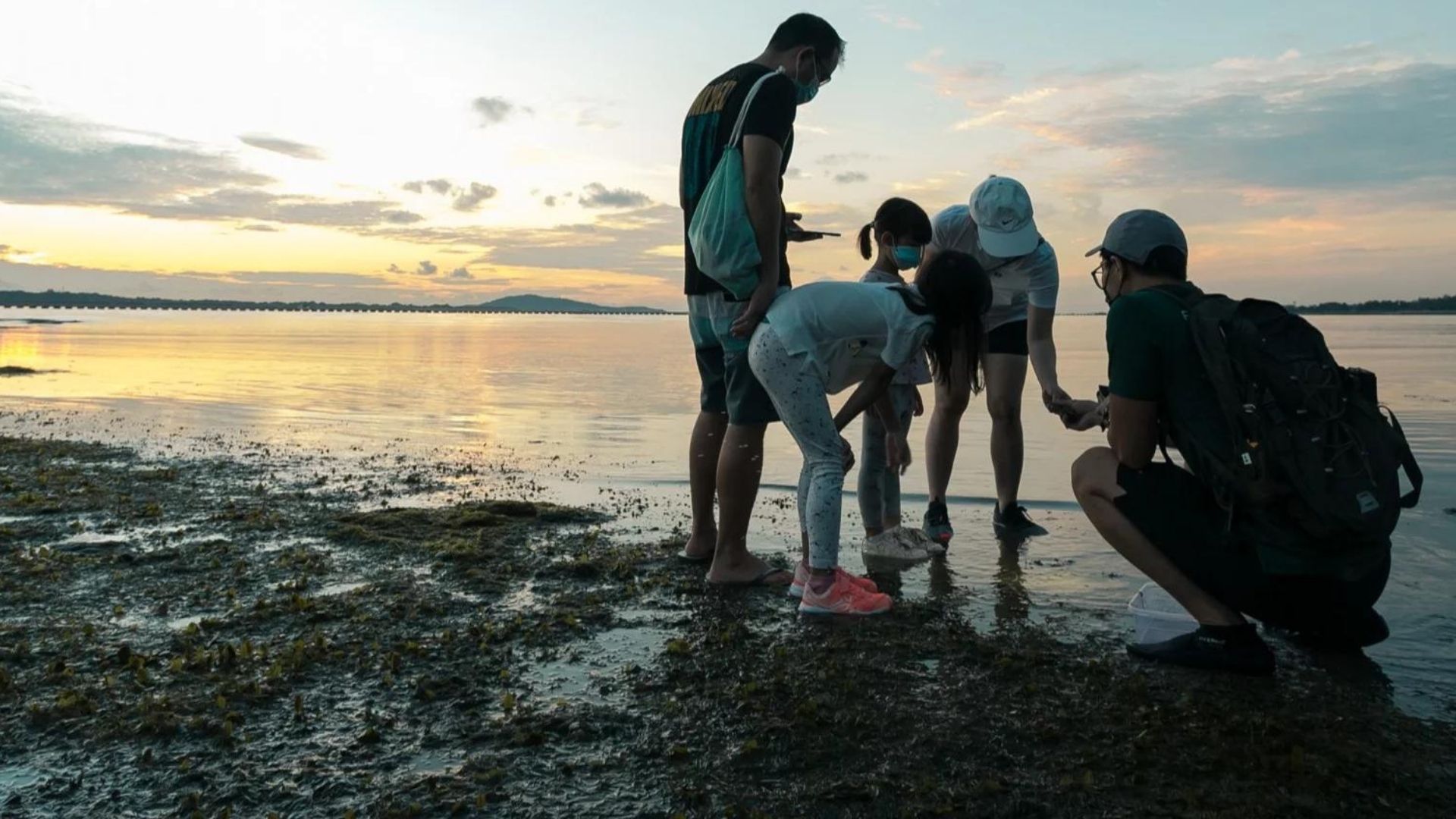
Travel is finally regaining traction two years into the pandemic, with Vaccinated Travel Lanes (VTLs) withstanding in the face of the latest coronavirus outbreaks. Countries like Sweden have even declared the pandemic over , while others no longer mandate mask-wearing or Antigen Rapid Testing (ART).
While the Covid-19 pandemic brought travel almost to a standstill in 2020 — costing the Global Tourism Industry an estimated $935 billion in one year alone — it seems travellers have taken the time out to rethink their modes and impacts of travel.
According to a study conducted by travel accommodation agency Booking.com , more than 4 in 5 of global travellers think sustainable travel is vital, with 3 in 5 saying the pandemic has made them want to travel more sustainably in the future.
Yet, almost half still believe that as of 2021, there were not enough sustainable travel options available, with more than half admitting they get annoyed if their place of accommodation prevents their sustainability practices — such as not having recycling facilities.
And travel-related businesses — including the hospitality, food and beverage, and travel industries — are following suit, going along with that demand closely.
“ Sustainability is no longer an add-on , it’s risen the league table of priorities substantially,” Mr Martin Ferguson, Vice President of public affairs for American Express Business Travel told sustainability news site, Eco-Business. “I don’t foresee any set of circumstances where a majority of companies reduce their focus on sustainability…we’re beyond that. It’s so fundamental to business culture now.”
Tourism in Singapore is no exception — in the past two years alone, many companies have made significant strides in greening up places of interest, accommodations, and dining.
Here is a compiled traveller’s guide for the sustainable tourist in Singapore.

Travel: Getting here and getting around
1. singapore airlines (sia) .
In May 2021, the Singapore International Airlines Group — Singapore’s national airlines — announced its commitment to achieving net-zero carbon emissions by 2050.
The Group has been investing in more fuel-efficient aircraft such as the Airbus A350s and the Boeing 787s, which are about 30 percent more fuel-efficient than previous generation aircrafts, helping to reduce emissions.
Earlier this month (11 Feb), Singapore Airlines (SIA) and budget carrier Scoot announced that from the third quarter of 2022, all their aircrafts will begin using sustainable aviation fuel, which is made from used cooking oil and waste animal fats supplied by oil refining company Neste.
Individually, travellers are provided with the option to reduce their individual carbon footprint through the Carbon Offset Programme launched in June 2021. This will allow travellers on Singapore Airlines, Scoot, and even when they send parcels by SIA cargo to have the option of offsetting the individual emissions from their flights at a premium.
These premiums will be used to support high-quality carbon offsetting projects verified by third-party certification bodies like the Verified Carbon Standard Program and the Gold Standard. Patrons can choose between dedicated projects such as rainforest preservation, solar power, and indoor air pollution.
For more information on SIA’s sustainable travel initiatives, click here .
2. Slow Travel
Despite these many commendable strides, air travel and carbon offsetting remain not without flaws . Pursuant to teenage climate activist Greta Thunberg’s pledge to cease taking air flights altogether, “The Greta Effect” has followed, causing a global rethink about whether air travel is really necessary at times.
If you have time to spare and are travelling relatively short distances, slow travel might be something you want to look into. For example, if you’re travelling around Europe, you could take the Eurostar train instead of flying across countries, even if the prices are comparable.
When out and about in Singapore, you could opt for private hire transport — ride-hailing app Grab now offers to option for passengers to offset the carbon emissions of their rides at just an additional $0.10 — but with one of the best and most affordable public transport systems in the world, we doubt you’ll need it.
Advocates of slow travel also emphasise on the perk of discovering a city’s hidden gems — who knows what one might discover looking out the Mass Rapid Transit (MRT) window or walking on foot instead?
Accommodations
1. parkroyal collection on pickering .
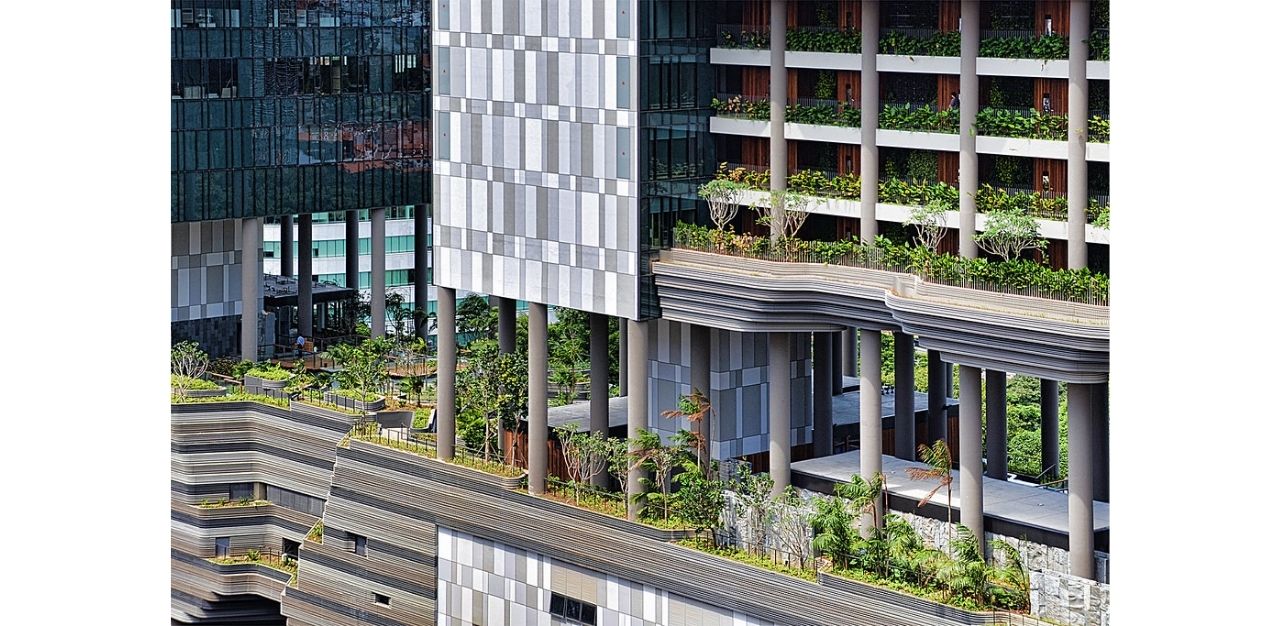
For five years in a row, this hotel-in-a-garden has held tightly to the title of Asia’s Leading Green hotel . Its extensive landscape features 50 different varieties of plants to create a 15,000 m 2 lush tropical urban high-rise garden constituting more than 200 pe cent of the total land area. All of this is designed to be self-sustaining, with water usage minimised by rainwater harvesting.
Urban jungle exterior aside, the building employs a variety of cooling architectural feats , with its high-performance glass cutting out solar heat, yet maximising the intake of natural sunlight. Its roof terraces also insulate the upper storey from gaining direct heat, while serving as a recreational space for guests.
2. Grand Hyatt
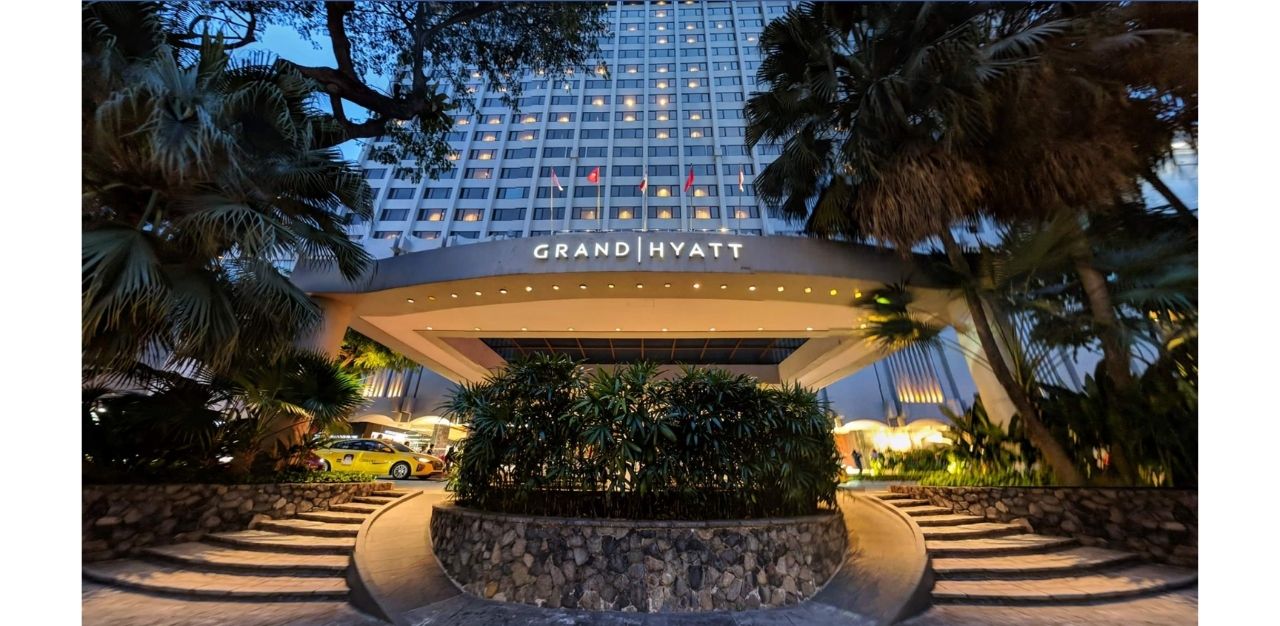
Located just outside the city’s most iconic shopping district, Orchard Road, the Grand Hyatt champions plant-based and vegan food options. Besides being the first to cater the Beyond Burger and JUST eggless eggs in Singapore, the hotel now has a longstanding partnership with social enterprise UglyFood to make orange juice out of blemished oranges that would otherwise be rejected by supermarkets and grocery stores.
With seafood certified sustainable by Marine Stewardship Council (MSC) and Aquaculture Stewardship Council (ASC) , and local greens from Singapore’s urban farmers and Cameron Highlands in Malaysia, as well as herbs from the hotel’s very own rooftop garden, it’s an ethical foodie’s dream come true.
3. Marina Bay Sands
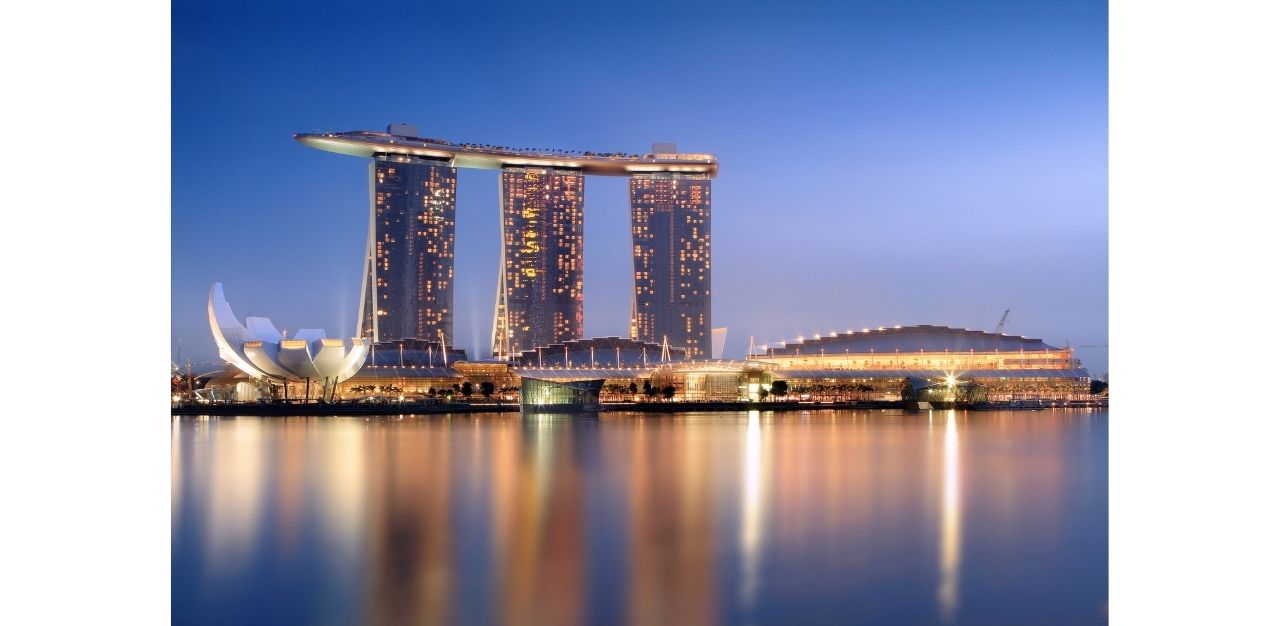
Despite being a globally-iconic luxury hotel, Marina Bay Sands does not skimp on its sustainability practices. The hotel employs an Intelligent Building Management System, which has automated control over lighting, heating, and water, for conservation purposes. For example, if guests have a window or door open, air conditioning will automatically be deactivated.
Since its conception in 2012, it has demonstrated a solid commitment to sustainability by reducing their carbon footprint by over 30 per cent, and as of 2020, have been deemed the first carbon-neutral MICE venue in Singapore.
1. Open Farm Community
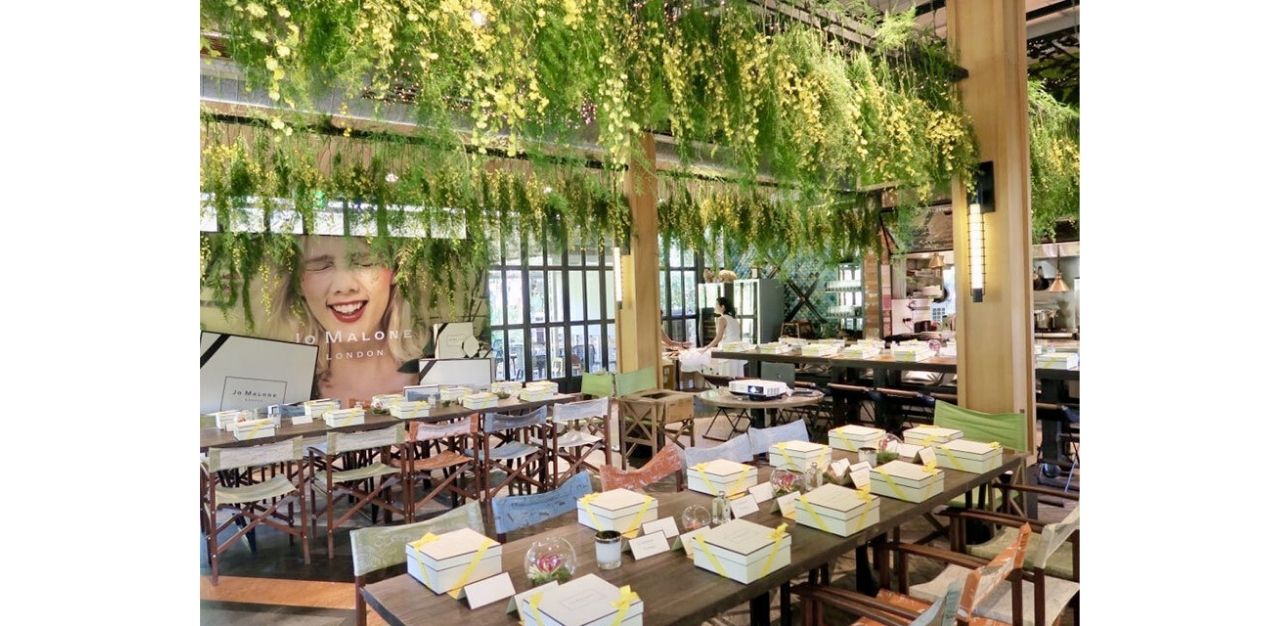
Pocketed in a little garden sanctuary along Holland Road, Open Farm Community is Singapore’s pioneer farm-to-table restaurant, championing the grow-your-own-food movement. Its on-site urban farm and garden give a seasonal harvest of herbs, fruits, and vegetables, resulting in an ever-changing menu that moves according to what nature has to offer at the time.
For any other foods the restaurant can’t produce on-site, it procures from the large network of local and Southeast Asian organic growers, such as locally-farmed chicken and biodynamic wines.
2. Scaled by Ah Hua Kelong
This one-of-a-kind seafood restaurant makes seafood as fresh — not to mention, sustainable — as it could possibly get. Co-owned by seasoned fisherman Ah Hua who spends most of his days in the kelongs and seafood farms on the coasts off of Singapore waters, the restaurant serves dishes made from the day’s catch.
The establishment offers a local take on classic dishes like fish and chips, pan-seared sea bass, and spaghetti — using native fish species instead like snappers, sea bass, and groupers.
3. Abillion app
For the vegan or plant-based traveller, the Abillion app is a must-have in these parts of the world. This one-stop shop is the largest curation of plant-based based foods around, complete with reviews by the community, for the community.
The platform’s much-aniticipated annual list of Singapore’s Best 50 Vegan Dishes this year will be released on 22 February.
One of the defending champions is Vietnamese restaurant The Kind Bowl’s The Kind Pho— a “no chicken” soup served with rice noodles in a spiced umami broth.
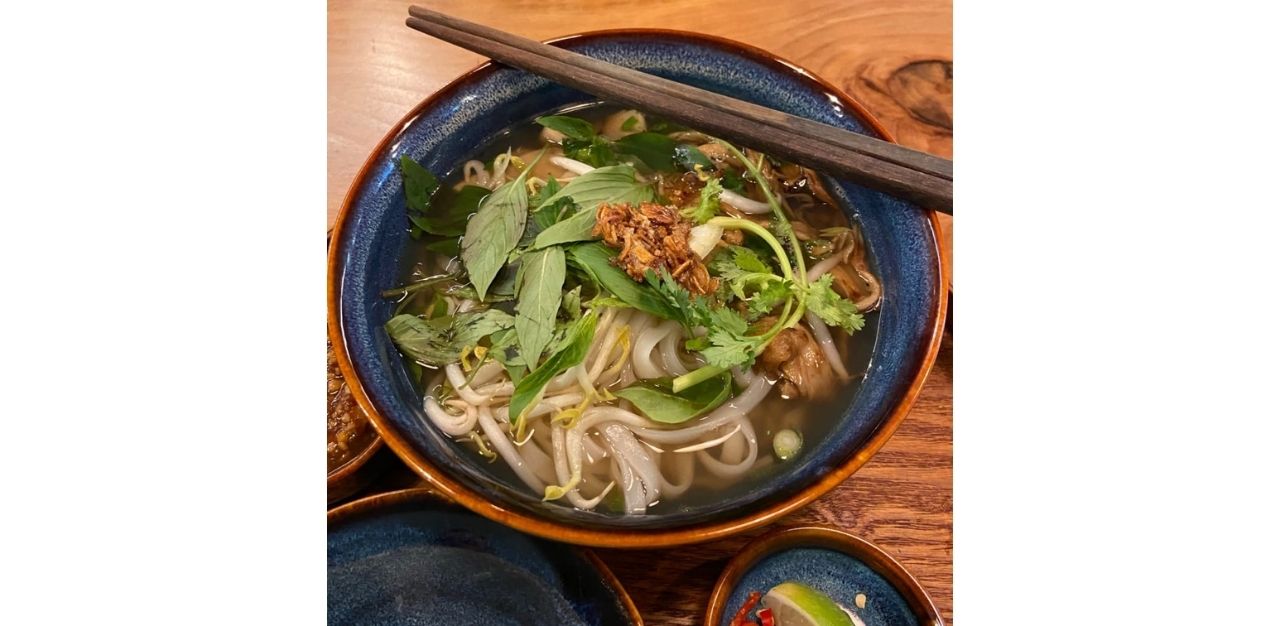
Attractions
1. let’s go tour singapore .
Fancy a tour around Singapore? Why not do it on a bike, and learn about local biodiversity and Singapore’s sustainability sights while at it? Let’s Go Tour offers a large array of bike tours, cooking tours, boat tours, malay-speaking tours, and more.
History buffs should check out the Trails of Tan Ah Huat, telling the story of Singapore in the 1920s. Those who have always been curious about Singapore’s strive for water and energy security should check out the Water Story & Sustainability tour.
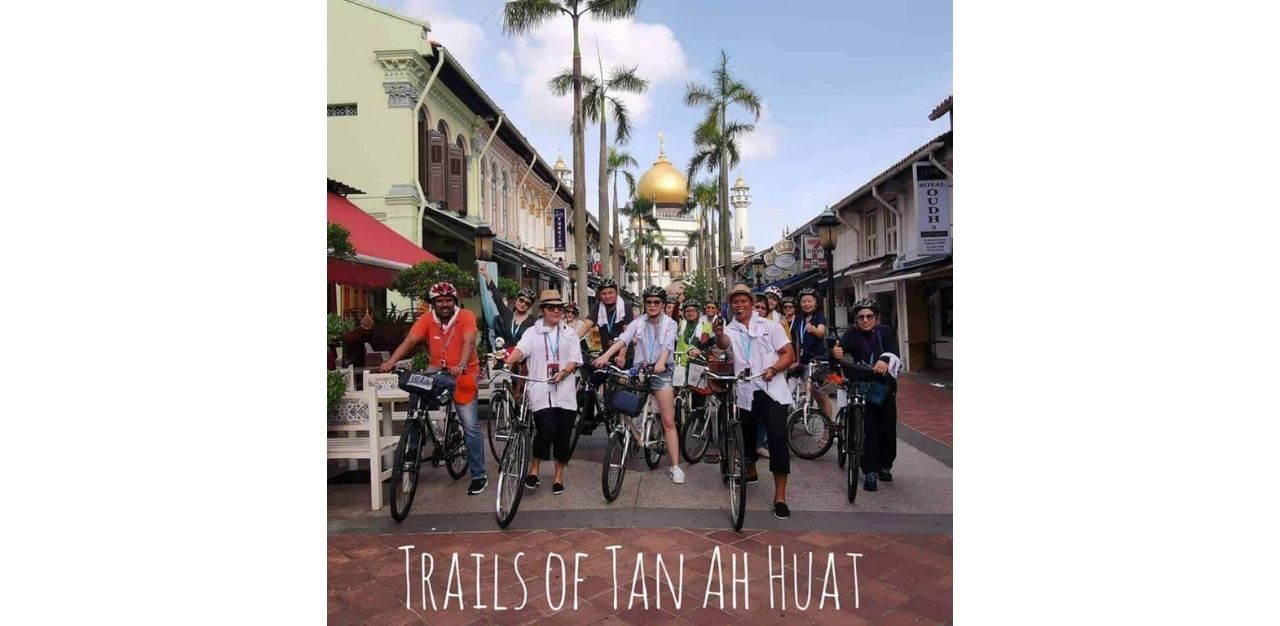
2. Untamed Paths
Contrary to popular belief, Singapore, with its robust conservation laws and stringent enforcement, is a stronghold for biodiversity in Southeast Asia. Having a tropical rainforest climate makes it a biodiversity hotspot, and the likes of flying lemurs, wild boars, sambar deers, and peregrine falcons are present in these parts of the woods — if one only knows where to look. Untamed Paths offers intertidal explorations, night adventures, and birdwatching tours that will help the nature-loving tourist do just that.
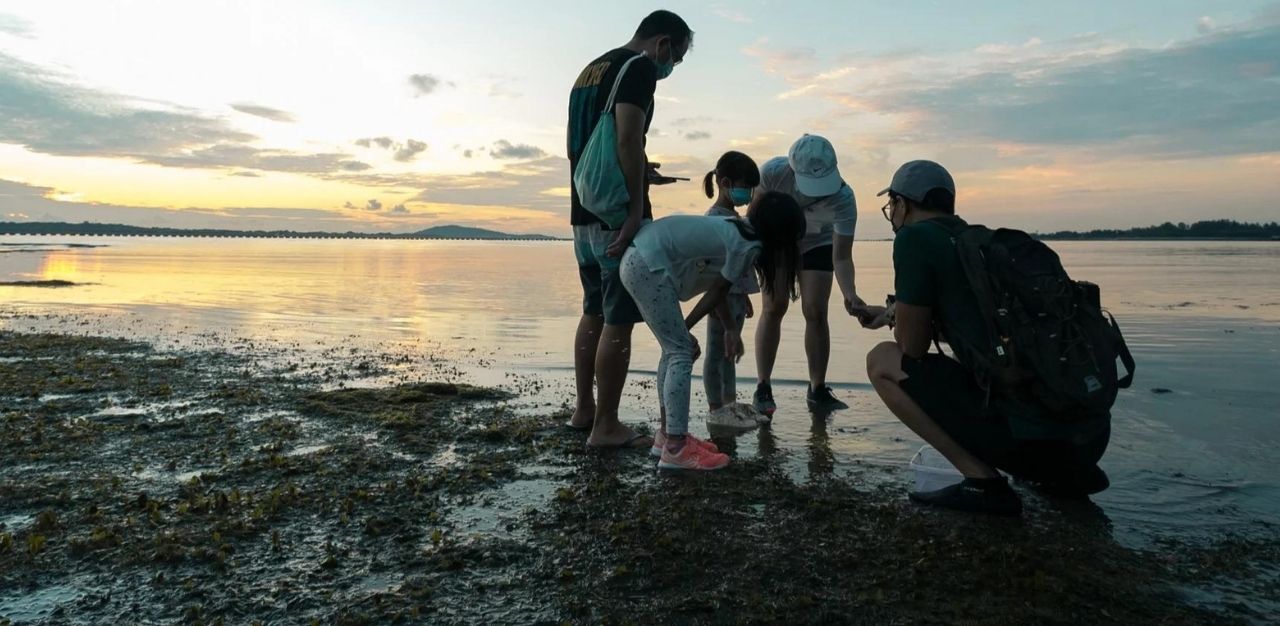
Join the conversations on TheHomeGround Asia’s Facebook and Instagram , and get the latest updates via Telegram .
- Tags: Asia , Community , Environment , Lifestyle , Local , Singapore , Travel
YOU MIGHT LIKE

Under Armour’s UA SlipSpeed arrives in Singapore: Slide & Trainers All in One
A trainer and slide all in one, Under Armour’s latest offering - the UA SlipSpeed™is a versatile trainer that adjusts...

OPPO Find N2 Flip Review: Making flip phones great again
The Oppo Find N2 Flip, was released in Singapore in March 2023 to much fanfare. Retailing at S$1,299, the latest...

Reunion, first purpose-built social space for seniors in a local museum opens
Dysphagia-friendly food, tunes from the 60s, and an immersive display room where you can furnish the interior of a kampong...

What really happens when you start stretching your muscles?
As you probably already know, stretching before and after exercise prevents injuries, increases performance and increases flexibility. As such, many...

Making or breaking a season: How important preseason is to a winning team
Preseason. A word that most footballers dread. After a well-deserved break from a gruelling season, the mere thought of preseason...

The OPPO Find N2 Flip lands in Singapore
The lights and cameras were in full action as the eagerly awaited OPPO Find N2 Flip made its debut in...

DJI Mini 3 Review: The perfect travel companion
So it turns out that good things do come in small packages. Launched in December last year, the DJI Mini...
LATEST UPDATE

Growing Home: A look into the future of Our SG Arts Plan (2023-2027)
An ‘odd’ otter, digital art generator, and a special edition watch strap. These were just some of the over 80...

Tan Kah Kee Foundation turns 40, announces S$60,000 scholarship for ITE graduates
As guests and members of the Tan Kah Kee Foundation gathered to celebrate the ideals of Mr Tan Kah Kee...

Winter sips, members exclusives and CNY treats with Starbucks Singapore festive menu
Who says it has to snow to enjoy the winter? Ease into 2023 sipping Starbucks Singapore’s new winter beverages and...

SportSG completes takeover of Sports Hub. The next challenge? Building it once more.
Ninth December 2022 marked a new chapter in the history of the Sports Hub with a flurry of activities and...

Get the latest articles and insights right to your inbox!
You might like.

Kids learning well the 5-Step way

Latest updates

A trainer and slide all in one, Under Armour’s latest offering - the UA SlipSpeed™is a versatile trainer that adjusts.

BROWSE BY TAGS
Thehomeground.
We are an inclusive digital news platform that tells credible, authentic, in-depth human-interest stories of hope, passion, resilience and triumph, holding space for voices that might otherwise be marginalised, displaced, ignored or simply unheard.
- Advertise with Us
- Terms of Use
- Privacy Policy
Copyright 2021 @ TheHomeGround Asia. All rights reserved
Welcome Back!
Login to your account below
Remember Me
Create New Account!
Fill the forms below to register
Retrieve your password
Please enter your username or email address to reset your password.
Are you sure want to unlock this post?
Are you sure want to cancel subscription.
The Straits Times
- International
- Print Edition
- news with benefits
- SPH Rewards
- STClassifieds
- Berita Harian
- Hardwarezone
- Shin Min Daily News
- SRX Property
- Tamil Murasu
- The Business Times
- The New Paper
- Lianhe Zaobao
- Advertise with us
Singapore's tourism industry to tap sustainability, wellness and tech trends for growth
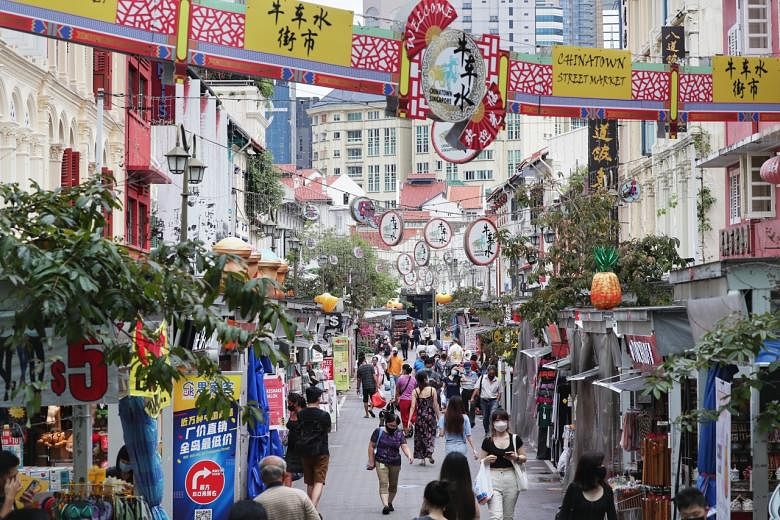
SINGAPORE - Instead of waiting for world borders to reopen, Singapore needs to disrupt the status quo. For the tourism industry here, the next big moves lie in sustainable travel solutions, technological innovation and holistic wellness.
This was highlighted by speakers at the opening of the Tourism Industry Conference on Wednesday (April 7).
Minister for Trade and Industry Chan Chun Sing said the tourism sector here already faced disruption, even before the Covid-19 pandemic. For instance, apps were replacing tour guides, maps and travel agents, and virtual or augmented reality allowed people to enjoy immersive experiences without leaving home.
The challenge is how Singapore will prepare for the long-term future, Mr Chan said.
Sustainable tourism presents an option to seize growth opportunities, especially with tourists becoming more conscious about the environment and are looking for more sustainable options.
The Government will pump $68.5 million into the Tourism Development Fund, which businesses can tap if they want to explore new areas including sustainability.
"In terms of the abundance of land and natural landscapes, Singapore might not be able to compete directly with other eco-destinations," Mr Chan acknowledged.
But Singapore's progressive and transparent regulatory environment and strong intellectual property protection will make the Republic an attractive place for companies looking to test-bed sustainable tourism products and experiences.
Another strength is the vibrant public and private ecosystem here that will facilitate effective partnerships for businesses and workers to grow their capabilities, Mr Chan added.
Singapore Tourism Board chief executive Keith Tan said Singapore could find another niche in being a leading urban wellness haven, where wellness and beauty offerings and experiences are easily available in a busy modern city.
"Covid-19 has made wellness a top priority for all of us," he said, adding that a growing middle class, especially in Asia, will pay a premium for offerings that enhance their sense of well-being.
Some industry players are already moving towards that direction. Grand Hyatt Singapore, for example, collaborated with local activewear brand Kydra to launch a staycation package, Recharge Retreat, which offers a one-night stay with other benefits such as a set of activewear, body treatment at a spa, and a meditation session.
Mr Chan said the tourism sector should also leverage technology, such as by using it to create a unique experience for tourists and locals alike.
He said: "In a world where visitors are not constrained by physical boundaries, travel is no longer just about meeting or sightseeing, but the unique suite of experiences that it offers to visitors from pre-arrival to post-departure."
One example is how tour operators have developed innovative experiences such as the Niu Che Shui Murders launched by Tribe Tours. On this gamified hybrid tour, participants solve a series of puzzles around Chinatown.

To support industry players in their digital transformation, STB also launched its innovation platform, Tourism Technology Transformation Cube (Tcube), on Wednesday.
Tcube provides training courses and resources to pick up digital skills such as data analytics, and also provides consultancy and prototyping services for tourism companies that wish to refine their digital strategies. Participants can also get guidance from industry mentors through events and talks.
Mr Chan said the challenge for Singapore, moving forward, is how it can prepare for long-term success and reinvent global travel.
He said: "We are not waiting for a full reopening. Singapore is prepared to disrupt the status quo, transform our products and services, and harness our capabilities to capture the next type of growth ahead."
Join ST's WhatsApp Channel and get the latest news and must-reads.
- Singapore tourism
- Singapore Tourism Board
- Travel and leisure
Read 3 articles and stand to win rewards
Spin the wheel now
Why Green Singapore Wants to Go Even Greener
Raini Hamdi, Skift
April 14th, 2021 at 7:00 AM EDT
Singapore sees a huge future in sustainable tourism as an outcome of the pandemic. And when Singapore sees, Singapore does.
Raini Hamdi
Singapore won’t settle for being just a garden city anymore. It wants to be a green city. Sustainability will be a prime reason for tourists to visit and for investors to come in and seed new green solutions for travel and tourism, say officials there.
“Tourists today are more environmentally-conscious and are looking for sustainable travel options. Our vision is to position Singapore as a top sustainable and innovative urban destination,” said Singapore’s trade and industry minister Chan Chun Sing, last week at an annual tourism industry conference.
The vision is part of a national Green Plan 2030 , launched in February and spearheaded by five government ministries: education, national development, sustainability and the environment, trade and industry, and transport.
All over the world, tourism cities want to be cleaner and greener, with the pandemic flaming that desire. But there’s no simple solution, even in Singapore, as no tourism industry on its own can build a sustainable environment for visitors.
“Most destinations are not managed sustainably, primarily because they didn’t even consider it until recent years. Most municipalities spent only on promotion and left development to the private sector. This is how we got into trouble,” said Randy Durband, CEO of Global Sustainable Tourism Council. The independent organization sets global standards for sustainable travel and tourism, and helps destinations and businesses achieve those standards.
From Garden City to Green City
A new study by WWF-Singapore and Accenture highlighted the need for a collective, integrated action across people, public and private sectors to create a sustainable future for all.
Singapore tourism is among those lucky few where a green government is leading the whole country in the long march towards becoming carbon neutral by the second half of the century.
In truth, even if the industry does not lift a finger, it will benefit from the Green Plan 2030.
For one, tourists can expect a lot more nature in Singapore, just as Covid-19 has reset people’s respect for Mother Nature and healthier environments.
More than one million trees will be planted across the city-state between 2020 and 2030, while land area for nature parks will double, with parks providing more recreation options such as hiking and birdwatching. Additional sky-rise greenery, nature ways along roads and other measures will create a “city in nature.” In all, there will be 1,000 hectares more of green spaces, and recovery plans for 130 animal and plant species.
The trees alone will act as “carbon sinks, helping to sequester an additional 78,000 tons of CO2 [carbon dioxide],” said R. Raghunathan, CEO of WWF-Singapore .
Visitors in Singapore will commute via an expanded rail network, in public buses and cars that use only cleaner-energy, or simply by walking and cycling. Cycling paths will triple to 1,320 kilometers by 2030, from 460 kilometers in 2020.
Tourists will discover a sustainable living world, where citizens and businesses heed the national strategy to cut electronic-waste, packaging waste and food waste. Waste sent to the landfills per capita per day will be reduced by 30 percent by 2030.
This is a far cry from today, where citizens overall aren’t green yet. Their “take, make, use and throw” approach shows up by the amount of disposables sent to the incinerator. In 2019, that’s 200,000 tonnes, enough to fill 400 Olympic-size swimming pools.
Greenest Tourism City
Singapore Tourism Board CEO Keith Tan declined to pick a city which Singapore can benchmark against as a top sustainable urban destination. “We intend to build on and incorporate sustainability into our City in Nature identity, to differentiate ourselves from other global urban destinations,” he said.
While there isn’t a consistent green ranking for tourism cities, a quick check shows Copenhagen, Denmark, as the current top choice. Singapore actually isn’t far behind. Lonely Planet, for instance, ranks Singapore third after Portland, Oregon, and Copenhagen in a January article.
“Globally, it’s a selection of the Nordic cities,” said Durban when asked to name his top green tourism city. “One could choose Gothenburg, Sweden, but I prefer to go with Copenhagen based on the challenges of scale in the larger city. They aim for carbon neutrality as a city by 2025, have been working on it for years, and remain confident that they can get close to if not 100 percent there.”
“Singapore tends to win top honors in Asia, such as the Arcadis [ Sustainable Cities Index 2018 ],” he added. (Note to readers: Arcadis has not released a more recent index.)
Making Green City
But what makes a green tourism city?
WWF-Asia said it’s the maxim of “not taking anything away and not leaving anything behind.”
Urban tourism has distinct differences from other forms of tourism but the same maxim applies just as well to suppliers and consumers of urban tourism, said Raghunathan.
“For example, a sustainable urban tourism destination will focus on providing architectural, cultural, technological, and social experiences without significantly increasing carbon emissions, pollutants or destruction of natural habitats. Art appreciation, cultural performances, architectural appreciation are examples,” he said.
This need not apply to just more developed urban centers, but less developed ones. “An appreciation of their social and cultural offerings, be it art, music, dance, food without conspicuous over-consumption helps in every way towards reducing the tourism footprint in these urban tourism areas,” said Raghunathan.
Over the coming months, the Singapore Tourism Board will reach out to tourism players for feedback and ideas that will help form a roadmap towards being a top green urban destination.
“We must tackle sustainability collectively as a destination, rather than enterprise by enterprise,” said Tan, while commending efforts that have already been taken by some industry players.
Sentosa Island, for instance, is aiming to be carbon neutral by 2030. Homegrown hotel company Far East Hospitality is rebranding more of its hotels to address a new profile of customers. They are now more discerning and mindful about the environment and sustainability issues, said CEO Arthur Kiong.
Green Tourism Economy
Singapore is not just eyeing these changed travelers, but the businesses that cater to them. It wants to attract companies worldwide to launch first-to-market sustainable tourism solutions and innovations in the country.
As a first step, the tourism board is expanding the scope of its Accelerator program to include such start-ups.
“We welcome companies with an ambition to expand to this region and want to be part of Southeast Asia’s growth story to apply,” said Tan. “We are open to innovative solutions that can track, monitor and achieve the sustainability goals of tourism businesses.”
Selected companies receive funding support of up to 70 percent of qualifying costs, or up to S$25,000 ($18,703) per company to testbed their solutions.
“Singapore absolutely can and should be a place to launch them,” said Durban. “Cities are the best launch points, and a city-state is all the better, especially with a developed economy, a highly educated society and great infrastructure.”
But there is cynicism among some industry members.
“A word that has been bandied about,” said one, of sustainability.
“First world luxury,” said another.
“An investment we can ill-afford right now.”
Be that as it may, Far East Hospitality’s Kiong, who is also vice president of the Singapore Hotels Association, insists that Singapore must use this pandemic to reinvent itself.
“We are into our third tourism evolution. The first, in the early 1970s to late 1980s was a ‘me too’ with food and shopping. The 1990s to 2010s was ‘me better’ i.e., newer convention facilities and bigger integrated resorts. In the next evolution, we have to be ‘me only’ – unique destination and experiences.
“Singapore saw a tad below 19 million arrivals in 2019 and this generated about S$28 billion ($21 billion) in tourism receipts. In a post-Covid world, we cannot continue to grow arrivals but must at least maintain the number and grow tourism receipts. Hence we need a meaningful pivot,” said Kiong.
The risk of not doing so is evident. For one, Singapore isn’t alone in the race to win over new travelers. The Global Sustainable Tourism Council said it is seeing “a great pick up” by governments and businesses alike to apply its Destination and Industry sustainable criteria respectively.
“We’ve been busier than ever during the pandemic, as many governments are using the pause to plan and develop, and we’ve been advising on systematic approaches in many countries and countless destinations. But the largest countries where we’ve gone the deepest in the past 15 months are Japan, Switzerland and Greece. Many hotel operators and tour operators at larger scale have also been deeply engaged,” said Durban.
For decades, the Garden City, a vision of Singapore’s founding father, Lee Kuan Yew, has been Singapore tourism’s bed of roses. After all, who can compete with such a unique selling point as: “All cities have gardens, but none are a city in the garden like Singapore.”
Perhaps it’s time for a new differentiator, and what can be more natural and timely than a leap to be green in the deepest sense of the word.
The Daily Newsletter
Our daily coverage of the global travel industry. Written by editors and analysts from across Skift’s brands.
Have a confidential tip for Skift? Get in touch
Tags: climate change , singapore , sustainability
Photo credit: Singapore: The future is green. Raini Hamdi

- Board Of Directors
- Organisation Chart
- Achieving Quality Tourism
- Legislation
- Corporate Governance
- Invest in Tourism
- ASEAN Economic Community
- Media Releases
- Corporate Publications
- Newsletters
- Statistics & Market Insights Overview
- Tourism Statistics
- Industries Overview
- Arts & Entertainment
- Attractions
- Dining & Retail
- Integrated Resorts
- Meetings, Incentives, Conventions & Exhibitions
- Tourist Guides
- Travel Agents
- Assistance and Licensing Overview
- Tourism Sustainability Programme (TSP)
- Singapore Visitor Centre (SVC) Network Partnership
- Grants Overview
- Licensing Overview
- Tax Incentives Overview
- Other Assistance & Resources Overview
- SG Stories Content Fund Season 2
- Marketing Partnership Programme
- SingapoReimagine Marketing Programme
- Singapore On-screen Fund
- Hotel Licensing Regulations
- Data College
- Trade Events and Activities
- Trade Events Overview
- SingapoReimagine Global Conversations
- SingapoRediscovers Vouchers
- Made With Passion
- Joint Promotion Opportunities
- Procurement Opportunities for STB's Overseas Regional Offices
- Product And Industry Updates
- Rental of F1 Pit Building
- Singapore Tourism Accelerator
- Sponsorship Opportunities
- STB Marketing College
- Tourism Innovation Challenge
- Harnessing Technology to Emerge Stronger Post COVID-19
- Tourism Transformation Index (TXI)
- New Tourism Development in Jurong Lake District
- International Trade Events
- Singapore Familiarization Trips
- EVA-Ready Programme
- Tourism Industry Conference
- Expo 2025 Sponsorship and Partnership Opportunities
- Students & Fresh Graduates
- Professionals
- Attractions Operator
- Business/Leisure Event Organiser
- Media Professional
- Tourist Guide
- Travel Agent
Singapore’s tourism sector remained resilient in 2021, ready for recovery in 2022 and beyond
International visitor arrivals and tourism receipts reached 330,000 and $1.9 billion [1] , with encouraging growth amid continued border restrictions
Singapore, 25 January 2022 – Singapore’s international visitor arrivals (IVA) and tourism receipts (TR) reached 330,000 and an estimated $1.9 billion[2] respectively in 2021.
While these numbers represent only a fraction of Singapore’s tourism performance prior to the pandemic, there have been encouraging signs of recovery in the tourism sector, with year-on-year growth in the last three quarters of 2021. The introduction of various travel arrangements, such as Vaccinated Travel Lanes (VTLs), has encouraged the gradual return of international travellers. Domestic consumption has also been strong, as the tourism sector pivoted to develop new and innovative experiences for locals.
Mr Keith Tan, Chief Executive, Singapore Tourism Board (STB), said: “While it will take time for tourism numbers to return to pre-pandemic levels, we are encouraged by the resilience of our tourism businesses, and their commitment to preserve good jobs, transform their businesses, and invest in new products and experiences. These efforts will strengthen Singapore’s appeal as we prepare to welcome more international visitors.
“We must anticipate setbacks and challenges even as the tourism industry recovers slowly. But I am confident that the tourism industry has learnt from its experiences, and is poised to recapture demand when it returns.”
2021 Tourism Performance
Singapore’s tourism sector recorded overall year-on-year declines in IVA and TR, largely due to the effect of strong tourism performance in the first two months of 2020[3]. IVA increased 221 per cent in the last three quarters of 2021, compared to the same period in 2020. TR for the second and third quarter of 2021 is 92 per cent higher than the same period in 2020.
Between January and December 2021, 330,000 international visitors arrived in Singapore. China (88,000), India (54,000) and Indonesia (33,000) were the top three visitor source markets in 2021.
Between January and September 2021[4], TR reached $1.2 billion. Visitors from China, Indonesia and India contributed $432 million, $127 million and $58 million in TR (excluding Sightseeing, Entertainment and Gaming)[5] respectively.
Stimulating Domestic Consumption
During this period, the tourism sector adapted to focus on domestic tourism, supported by STB initiatives such as the SingapoRediscovers campaign and the SingapoRediscovers Vouchers (SRV) scheme, which were both launched in 2020, as well as a range of new partnerships.
By the end of the SRV scheme on 31 December 2021, about 1.9 million Singaporeans have used their vouchers at least once, making about 2.6 million transactions. Close to $300 million in SRV transactions were recorded, comprising close to $180 million in vouchers and about $120 million in out-of-pocket payments for SRV bookings.
Key partnerships to support domestic tourism included a collaboration with Mastercard on the “Rediscover Priceless® Singapore” campaign - which leveraged consumer insights, spending behaviour and trends to promote local tourism businesses.
As part of our existing three-year partnership with DBS, STB also tapped on DBS’s data analytics capabilities to curate itineraries, destination content and promotions, to encourage locals to explore Singapore.
Key Industry Performance
Hotels Industry Performance
In 2021, several new hotels with unique lifestyle concepts opened in Singapore, such as The Clan, Maxwell Reserve and Oasia Resort Sentosa. These additions complement existing hotels that used this period to refresh or rebrand their properties, such as Hilton Singapore (reopening as voco Orchard Singapore in 2022) and Mandarin Orchard (reopening as Hilton Singapore Orchard in 2022).
To appeal to the domestic market, other hotels introduced unique staycation and guest experiences. For example, The Ritz-Carlton, Millenia Singapore launched the world’s only augmented reality (AR) hotel art tour for visitors to interact virtually with art pieces by globally-renowned artists such as Dale Chihuly and Frank Stella. Grand Hyatt Singapore also partnered with homegrown sports apparel brand Kydra and local organic food producers for its Recharge Wellness Retreat, to cater to the growing demand for sustainability and wellness experiences.
From January to December 2021, Singapore’s hotel industry registered an Average Occupancy Rate (AOR) of 56.2 per cent. This is a slight decrease of 1.1 percentage point compared to the previous year, when AOR was reinforced by strong tourism performance in the first two months of 2020. Average Room Rate increased slightly by 2.7 per cent to $158, while Revenue per Available Room held steady at $89.
MICE and Leisure Events
The resumption of MICE[6] events picked up pace in 2021, following the introduction of the Safe Business Events Framework in 2020. In 2021, Singapore hosted more than 200 MICE events with almost 50,000 local and international attendees. These included pilot events to testbed new protocols, such as the Bloomberg New Economy Forum, Industrial Transformation Asia Pacific 2021, Milken Institute Asia Summit and the 50th St Gallen Symposium.
STB will continue to build up the pipeline of significant MICE events for 2022 and beyond, including some multi-year events. Notable ones include FIND – Design Fair Asia (2022–2024), Gastech 2023, Global Health Security Conference 2022, 60th International Young Lawyers' Congress 2022, Seafood Expo 2022, SILMO Singapore (2023–2025), transport logistic and air cargo 2023, World One Health Congress 2022 and the World Congress of Dermatology 2023.
Leisure and lifestyle events that STB supported in 2021 included the Dale Chihuly: Glass in Bloom exhibition at Gardens by the Bay and the international premiere of Pop-Up Disney! A Mickey Celebration. STB also supported the Mobile Legends Bang Bang M3 World Championship in December 2021, and the HSBC Women’s World Championship at Sentosa – the first international professional golf tournament in Asia, and first to have corporate hospitality suites in Singapore since the start of the pandemic. STB will expand the range and scale of such lifestyle and leisure events in 2022, to meet local demand and ensure that Singapore remains attractive to international visitors. One example will be the upcoming series of ONE Championship events in 2022.
Tours Industry Performance
The local tours industry performed well in 2021, with close to 320,000 local participants and strong month-on-month growth for most of the year. STB also launched the Tour Experience Innovation Lab (TEIL) and partnered other agencies to encourage the growth of new and innovative tour products.
Under TEIL, STB partnered the National Arts Council (NAC) for the Performing Arts Tours Pilot Grant, to help tour operators and arts practitioners develop innovative performing arts tours. Five new tours were borne out of this pilot grant.[7]
Under TEIL, STB also worked closely with the Sentosa Development Corporation (SDC) and tour operators to develop a series of sustainability- and heritage-themed tours, SentoSights, which showcase a different side of Sentosa. 10 new SentoSights tours were launched, focusing on heritage, sustainability, marine conservation and biodiversity.[8]
Attractions Industry Performance
The attractions industry worked hard to create new experiences to attract locals. For example, Wild Wild Wet introduced new concepts such as its version of a Songkran Festival[9], while Kidztopia had special unlimited entry passes to drive weekday demand.
Singapore also welcomed new attractions such as the Museum of Ice Cream and SkyHelix Sentosa. Existing attractions used this period to refresh their offerings or introduce new ones, which included Haw Par Villa’s Hell’s Museum, the Brickosaurs World at Singapore Zoo and River Wonders, ArtScience Museum’s new permanent Virtual Reality (VR) gallery, Madame Tussaud’s Singapore: Marvel Universe display, National Orchid Garden’s Tropical Montane Orchidetum, and Gardens by the Bay’s Orchid Haven.
There is also a series of new attractions in the pipeline. For example, the Jewel-rassic Quest, a ticketed AR experience at Jewel Changi Airport’s Canopy Park and Shiseido Forest Valley, is slated to launch in 2022. Using immersive AR technology, users will be transported 89 million years into the past on a quest, where they will complete activities and interact with dinosaurs along the way.
Cruise Industry Performance
The cruise industry rebounded strongly following the start of “cruises-to-nowhere” in late 2020. Since then, Singapore’s cruise industry saw over 400,000 domestic passengers set sail on close to 300 cruise sailings.
With the implementation of STB’s CruiseSafe certification programme and strong support from both Dream Cruises and Royal Caribbean International, there have been no COVID-19 clusters on board the two cruise ships to date.
Looking Ahead
STB will continue to ramp up efforts in our key source markets and deepen engagements with our tourism partners to capture growth and inspire travel to Singapore.
For example, STB will work with Singapore Airlines and the Changi Airport Group on the “Welcome Back to Singapore” campaign to instil travel confidence among international travellers. The campaign has been launched in Germany and India after VTLs were established with these two markets. It will be progressively launched in more markets including Australia, the United Kingdom, the United States, and South Korea.
In 2021, STB stepped up efforts around the world to strengthen Singapore’s mindshare as a top destination in the minds of avid travellers who found themselves unable to travel. In 2022, STB will continue these efforts through in-market partnerships, such as with Airbnb Experiences, Studio Dragon, and for the SingapoReimagine ULTRAMAN video series. In retail, STB will continue to collaborate with Made With Passion[10] Singapore brands, as well as brands in key markets such as India.
Ramping up our focus on urban wellness and sustainability
We are heartened to see more tourism businesses adopt sustainable practices, in line with Singapore’s aspiration to be a top sustainable and innovative urban destination.
In 2021, STB became a member of the Global Sustainable Tourism Council (GSTC), while Resorts World Sentosa became the first tourism business in Southeast Asia to secure GSTC Destination Criteria and Industry Criteria for Hotels certification. Mandai Wildlife Group also introduced its Mandai Environmental Sustainability Strategy and green procurement roadmap.
Meanwhile, STB is working closely with the Singapore Hotel Association (SHA) to develop a hotel sustainability roadmap with strategies and targets for the industry, which will be launched later this year.
To support our push towards becoming a leading urban wellness haven, we established a 5-year roadmap which identified key strategies and initiatives to develop Singapore’s wellness offerings. As part of this roadmap, we are pursuing strategic partnerships with industry stakeholders such as ClassPass, as well as launching an inaugural wellness festival in June 2022 to promote and increase the accessibility of Singapore’s wellness offerings.
Ensuring a pipeline of quality tourism workers
Even as we prepare for recovery, STB will focus on preserving good jobs and investing in future tourism growth by building up key manpower capabilities.
STB – together with the National Trades Union Congress (NTUC), Hospitality and Consumer Business Cluster unions[11], Workforce Singapore (WSG) and e2i, and the support of key Trade Associations[12]– will launch the Tourism Careers Hub in 2022 to provide training and skills upgrading for tourism workers and businesses, as well as support for individuals interested in pursuing tourism careers.
The Tourism Careers Hub will focus on three areas: (1) job matching within the tourism sector; (2) developing industry-specific capabilities to prepare the tourism workforce for recovery; and (3) encouraging technology transformation and business innovation to seize new growth opportunities.
More details about the Tourism Careers Hub will be announced soon.
STB Year in Review 2021
About the Singapore Tourism Board
The Singapore Tourism Board (STB) is the lead development agency for tourism, one of Singapore’s key economic sectors. Together with industry partners and the community, we shape a dynamic Singapore tourism landscape. We bring the Passion Made Possible brand to life by differentiating Singapore as a vibrant destination that inspires people to share and deepen their passions.
More: www.stb.gov.sg or www.visitsingapore.com | Follow us: facebook.com/STBsingapore or linkedin.com/company/singapore-tourism-board
[1] Preliminary estimates based on existing border restrictions due to Omicron; actual full-year tourism receipts will be available at a later date.
[2] Preliminary estimates based on existing border restrictions due to Omicron; actual full-year tourism receipts will be available at a later date.
[3] In the first two months of 2020, Singapore received 2.4 million international visitor arrivals. In 2020, overall IVA stood at 2.7 million while TR reached $4.8 billion.
[4] Full year tourism receipts for 2021 will be available from 2Q 2022.
[5] Sightseeing, Entertainment & Gaming have been excluded in the country analysis due to commercial sensitivity of information.
[6] Meetings, Incentives, Conventions and Exhibitions (MICE)
[7] The five tours borne out of the Performing Arts Tours Pilot Grant are: Somewhere in Time – A Journey Through Tanjong Pagar; Voices: Memories of Kampong Lorong Buangkok; Katong Vignettes; The Secret Life of Haw Par Villa; and rewalk: Telok Ayer. These tours are available progressively from November 2021.
[8] These tours are: Letters from Blakang Mati; Magical Discovery @ Sentosa; Immersive Rainforest Trails; East Asian Flyway (Introduction to Birdwatching); Sentosa Naturalist Night Adventure; Sentosa Intertidal Exploration; Serapong Trail; A Taste of Time Travel: Exploring 1870s Fort Serapong; Sentosa Sunset Cruise; Escape from St John’ Island
[9] The Songkran is a traditional Thai New Year festival, which uses water to express goodwill, love, compassion, and thankfulness.
[10] Made With Passion is a national initiative that showcases and celebrates local lifestyle brands and the passion behind them.
[11] Hospitality and Consumer Business Cluster unions include the Attractions, Resorts and Entertainment Union; Food, Drinks and Allied Workers Union; and The Singapore Manual & Mercantile Workers' Union.
[12] Association of Attractions (ASA), National Association of Travel Agents (NATAS), Singapore Hotels Association (SHA), Singapore Association of Convention & Exhibition Organisers & Suppliers (SACEOS), Society of Tourist Guides Singapore (STGS).
About the Organisation
What industry does your organization fall within, what best describes the key intent of the project that your organisation is seeking funding for, is your organisation a singapore-registered legal entity, is your organisation an association, is the project able to achieve one or more of the following outcome.
- Increase no. of sailings to/from Singapore
- Increase no. of foreign cruise passengers to Singapore through sailings to/from Singapore
- Increase no. of pre/post nights for cruise passengers sailing to/from Singapore
- Increase capability of industry players via cruise-specific industry training programmes
- Strengthen the potential/ attractiveness of cruising in Singapore and/or Southeast Asia
Is the project able to achieve one or more of the following?
- Improve visitor satisfaction (especially foreign visitors)
- Increase footfall
- Increase revenue
- Significant branding and PR value
Is the project able to attract foreign visitors and contribute to foreign visitors' spend?
Who will be the main target audience of your project, is your project innovative and/or a new event in singapore with tourism potential, what best describes your project, does the event have proven track records in singapore or overseas, and/or growth in tourism value such as growing foreign visitorship, and/or enhancement of precinct vibrancy etc, does the project have a clear tourism focus (e.g. tourism-related trainings, tourism companies taking on capability development initiatives or technology companies creating technology products and services for the tourism businesses), what best describes your market feasibility study project.
Based on your selection, the following STB grant/s may be applicable for your project:
Please note that projects that have commenced prior to Singapore Tourism Board's offer may not be eligible for grant support. Examples where projects are deemed as having commenced include:
- Applicant has started work on the project e.g. tender has been called.
- Applicant has made payment(s) to any supplier, vendor or third party.
- Applicant has signed a contractual agreement with any supplier, vendor or third party.

IMAGES
COMMENTS
Sustainable tourism is becoming a bigger concept in Singapore, where they are prepared to address traveller needs and reconsider their carbon output. The travel and tourism sector is one of the largest employers in the world with the number of workers in the sector reported to have reached 289 million (1). In 2021, travel and tourism accounted ...
Singapore, 28 February 2023 – Singapore has been certified [1] as a sustainable destination based on the Global Sustainable Tourism Council (GSTC)’s Destination Criteria, after being the first to apply the certification process on a country level. This reflects Singapore’s efforts and commitment in becoming a sustainable urban destination.
Global Sustainable Tourism Council (GSTC) The GSTC establishes and manages global standards for sustainable travel and tourism. In 2021, STB became a member of the GSTC, allowing Singapore to participate in and contribute to the efforts to advance sustainability in the global travel and tourism sector.
Furthermore, Singapore’s resort island, Sentosa aims to become a globally recognised, certified sustainable tourism destination and transform itself into a carbon-neutral destination by 2030.
Discover Singapore, our City in Nature, where large experiences come with small footprints. Known for being clean and green, Singapore strives to be a sustainable urban destination. Through collective action and the Singapore Green Plan 2030, our city is reducing its impact on the environment with a limitless realm of possibilities for ...
Singapore has been certified as a sustainable destination by the Global Sustainable Tourism Council (GSTC), making it the first country to achieve the certification process at the country level. The certification reflects Singapore's commitment to becoming a sustainable urban destination and its outstanding efforts to achieve this goal across ...
Tourism in Singapore is no exception — in the past two years alone, many companies have made significant strides in greening up places of interest, accommodations, and dining. Here is a compiled traveller’s guide for the sustainable tourist in Singapore. Travel: Getting here and getting around 1. Singapore Airlines (SIA)
The challenge is how Singapore will prepare for the long-term future, Mr Chan said. Sustainable tourism presents an option to seize growth opportunities, especially with tourists becoming more ...
Sustainability will be a prime reason for tourists to visit and Singapore Green Plan 2030 positions tourism at top green tourism city. Javascript is required for this site to display correctly. search
Singapore, 25 January 2022 – Singapore’s international visitor arrivals (IVA) and tourism receipts (TR) reached 330,000 and an estimated $1.9 billion [2] respectively in 2021. While these numbers represent only a fraction of Singapore’s tourism performance prior to the pandemic, there have been encouraging signs of recovery in the tourism ...